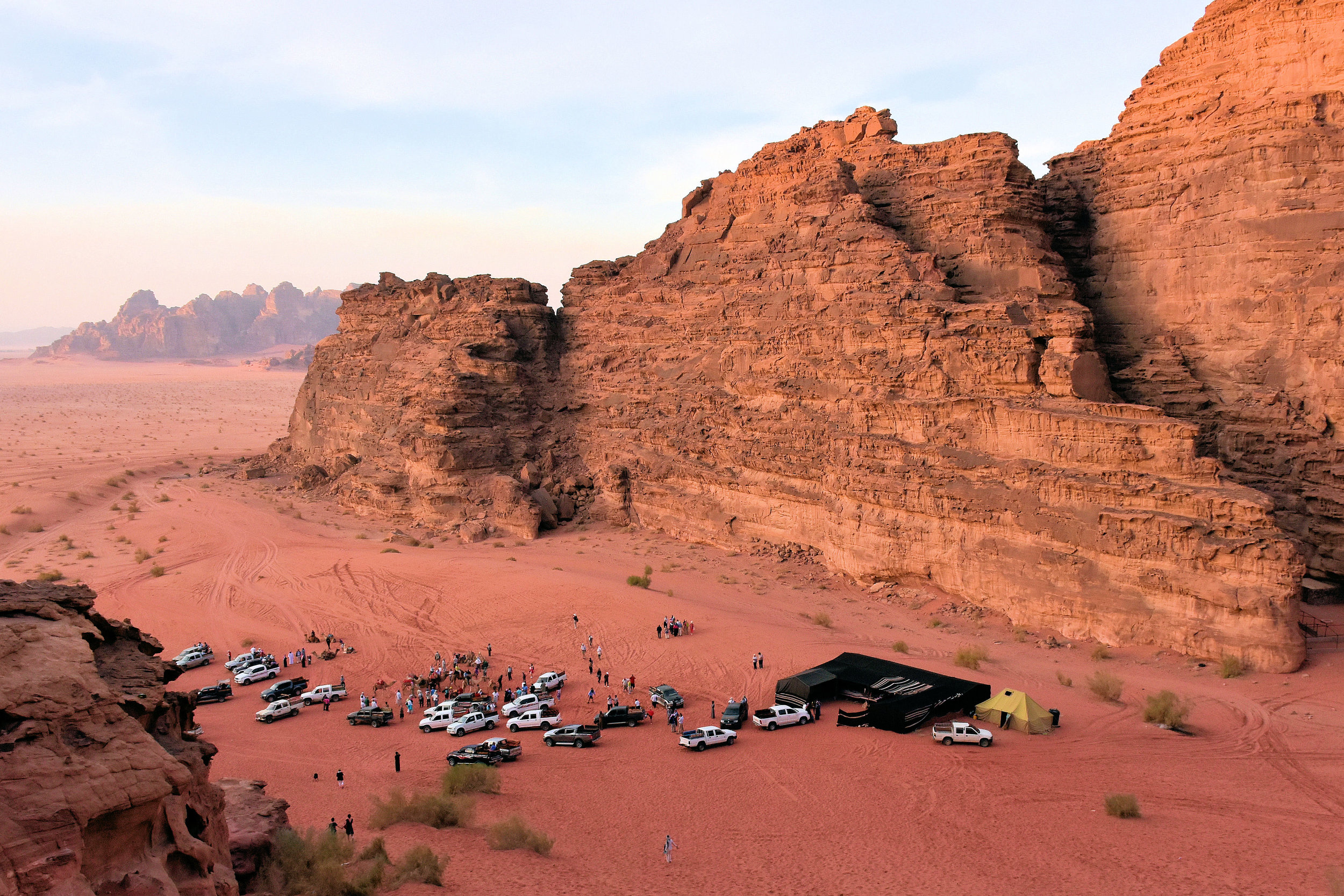Wadi Rum, Jordan
About 60 km east of Aqaba in southern Jordan is the desert called Wadi Rum. Made famous by T.E. Lawrence (the inspiration to the movie Lawrence of Arabia), the landscape in this part of Jordan is breathtaking and eerie. Here, Lawrence, a British military officer, sided with and fought in the Arab Revolt alongside the Bedouins of Jordan, to defeat the Turkish Ottomans and their German allies during the First World War. Speaking fluent Arabic and dressing like a Bedouin, he won the trust of the local Bedouin tribes. Some believe Wadi Rum (Aramaic for “elevated valley”) was his hiding place and the location of his headquarters.
Millions of years ago Wadi Rum was submersed under water. Now, it is 900 m (2,950 ft) above sea level. It is characterized by its red sand and reddish, beige and white sandstone pillars and mountains positioned on top of a massive, eastward sloping granite slab. This granite foundation is no less than 2 billion years old. The sandstone, worn down by millennia of wind erosion, features holes, crevasses and even bridges, giving this landscape an Arizona-like look and feel (the Bedouins would probably cringe at my description!).
Wadi Rum has been home to farmers, hunters and traders for over 10,000 years. Its latest inhabitants, the Bedouins (Bedu = “desert dwellers”), have not only learned to live in this hostile climate, but thrived in this area as nomads, relying primarily on their goat herds for survival. But life has changed for the Bedouins in recent years. The Jordanian government has long tried to persuade the Bedouins to settle in villages and to send their children to school. For the most part, this has happened. The government built villages out of concrete and the Bedouins moved in and grew crops instead of herding goats. Water does not appear to be a problem. Under the Wadi Rum is enough water to supply the Middle East for 100 years. Despite the many changes in Bedouin lifestyle, not all tradition is lost. The former nomads still live, to some degree, outside of the governing authority of the state. Especially the punishment of crimes and maintaining order in their society are tribal matters, upholding the Bedouins ancient code of honor.
A four-wheel drive excursion at Wadi Rum is one of the most popular tourist activities in the desert. Not very peaceful, but incredibly scenic - especially at sunset.
In a combination of the two lifestyles (nomadic and village) many Bedouins practice pastoralism, though only part of the year, grazing their goats, sheep and camels in the desert, living in tents before returning to their village. Only a very small portion of the Bedouins still live the traditional nomadic lifestyle on a full time basis, herding their goats from food source to food source.
After Wadi Rum was designated a protected area by the Jordanian government in 1998 and a UNESCO World Heritage Site in 2011, the Bedouins turned their attention to tourism, which is now the #1 source of income. With the help from the World Bank and a national NGO, they developed a conservation plan for the area and started to invite foreigners to come and experience Wadi Rum. From rock climbing to 4x4 tours to camel rides to spending a few nights in Bedouin tents, they now offer a vast array of tourist services.
If you want to find the origins of the Arabs’ way of life, look no further than the Bedouins. From hospitality to tribal structure, the Bedouins form the backbone of Jordanian society.

